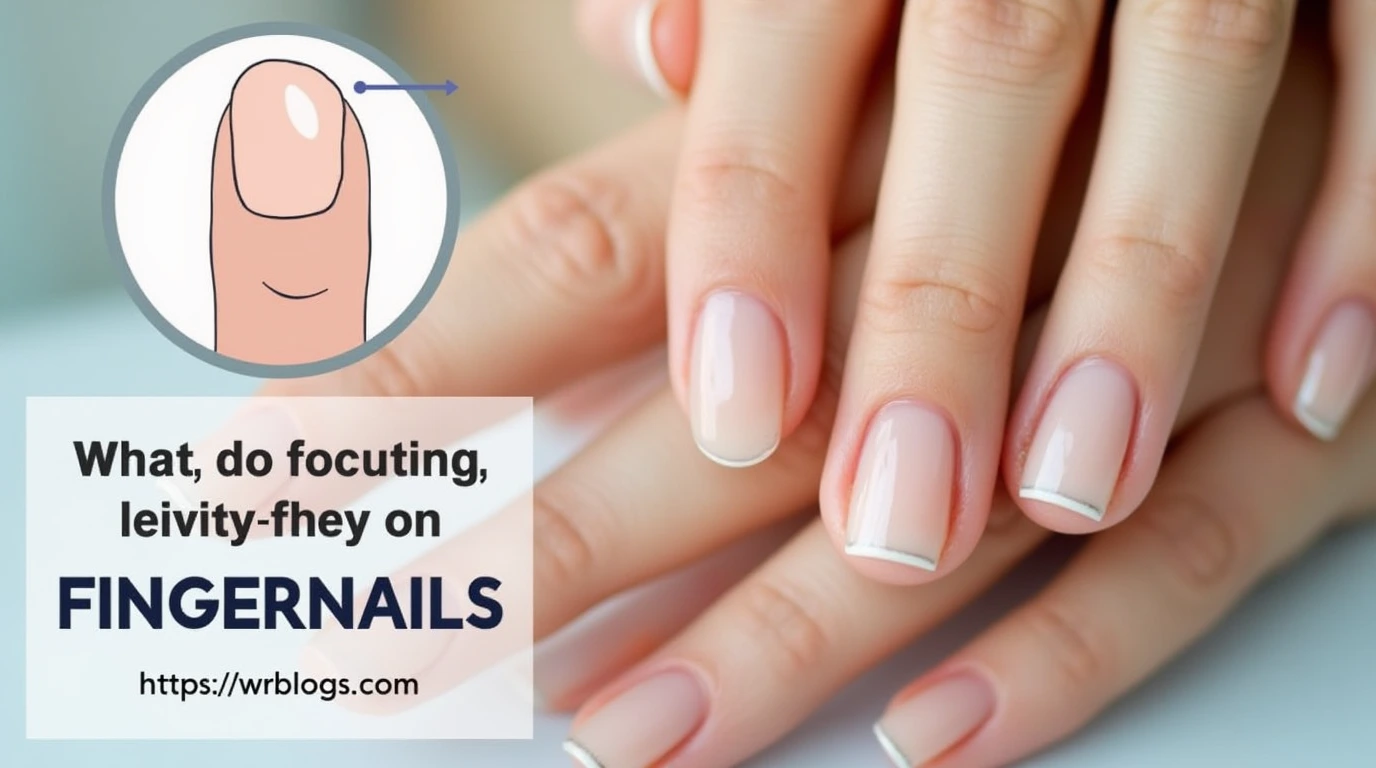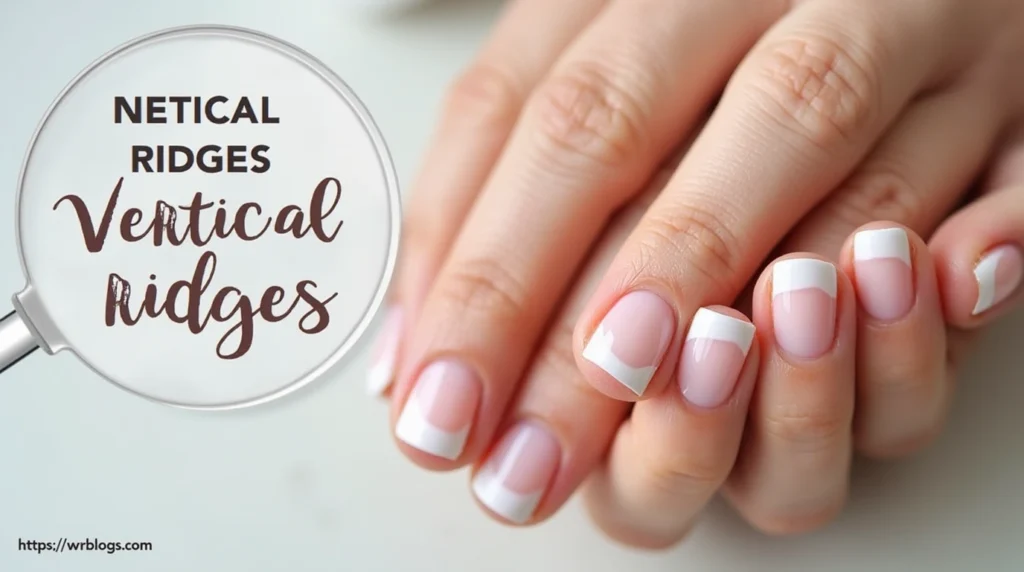Uncovering the Real Causes of Vertical Ridges on Your Nails: Tips for Healthier Nails
Have you ever taken a close look at your nails and noticed thin lines running from the base to the tip? These lines, known as vertical ridges, are more common than you might think. While they often seem harmless, they can sometimes signal underlying issues that need attention. Understanding the causes of vertical ridges and knowing how to care for your nails can help you maintain healthy, strong nails for the long haul.
In this article, we’ll dive deep into what causes vertical ridges on your nails and explore how to improve your nail health, so you can feel confident that your hands reflect your overall wellness.
Table of Contents
What Are Vertical Ridges on Nails?
Vertical ridges on nails are lines or grooves that run in a straight line from the base of your nail up to the tip. They can be barely noticeable, or they can stand out prominently depending on their depth. These ridges often come with age, but sometimes they can be a sign of something more serious happening inside your body.
It’s important to distinguish between vertical ridges and horizontal ridges. Horizontal lines, especially deep ones, may signal more urgent health problems, while vertical ridges are usually more benign. However, understanding what they might mean can help you better care for your overall health.
Anatomy of a Nail: How Nails Reflect Your Health
Your nails might seem like small, inconsequential parts of your body, but they can actually tell a lot about your overall health. The nail consists of several parts:
- Nail Plate: The visible hard part of the nail.
- Nail Bed: The skin underneath the nail plate.
- Cuticle: The thin layer of skin at the base of the nail.
- Nail Matrix: The area beneath the cuticle where new cells are generated.
Your nails are made primarily of keratin, a protein that also forms your hair and skin. Because of this, nails are highly sensitive to changes in your health. When your body is low on nutrients or affected by certain conditions, your nails are often the first to show signs—like vertical ridges.
Common Causes of Vertical Ridges
Now that we know what vertical ridges are, let’s explore the most common reasons behind their appearance. Several factors can contribute to these ridges, and understanding them can help you take better care of your nails.
Aging and Vertical Ridges
As you age, it’s natural to see changes in your nails. One of the most common age-related changes is the development of vertical ridges. This happens because, over time, the body’s ability to produce new cells slows down. As a result, the nails can become more brittle, and vertical ridges become more noticeable.
How to Manage Age-Related Ridges:
- Moisturize your nails and cuticles regularly to keep them hydrated.
- Avoid using harsh chemicals or nail products that can dry out the nails.
Nutritional Deficiencies
Your diet plays a major role in the health of your nails. If you’re not getting enough essential nutrients, it can affect nail growth and strength, leading to issues like vertical ridges. Some key nutrients that are particularly important for nail health include:
- Biotin (Vitamin B7): Promotes healthy nail growth.
- Iron: Lack of iron, or anemia, can cause ridges as nails struggle to get the nutrients they need.
- Zinc: Important for cell regeneration and overall nail health.
How to Address Deficiencies:
- Add more biotin-rich foods like eggs, nuts, and whole grains to your diet.
- Boost your iron intake with leafy greens, lean meats, and legumes.
- Consider taking a supplement if you’re struggling to meet your nutritional needs through diet alone.
Dehydration and Dryness
It’s easy to forget that your nails need moisture just as much as your skin. Dehydration can lead to brittle nails and make ridges more prominent. When your body lacks water, your nails can dry out, causing a loss of flexibility and strength.
Tips to Prevent Dehydration-Related Ridges:
- Drink plenty of water throughout the day to keep your nails hydrated.
- Apply a nail moisturizer or cuticle oil regularly to lock in moisture and strengthen the nails.
Medical Conditions That Cause Vertical Ridges
Sometimes, vertical ridges can indicate underlying health problems. While most vertical ridges are harmless, it’s essential to know when they might be pointing to a more serious issue. Some medical conditions associated with vertical ridges include:
- Thyroid Disorders: Both hyperthyroidism and hypothyroidism can affect the texture of your nails.
- Anemia: When your body lacks sufficient iron, it can lead to ridged or spoon-shaped nails.
- Autoimmune Disorders: Conditions like lupus can disrupt normal nail growth, leading to vertical ridges.
When to Seek Medical Attention:
If your vertical ridges are accompanied by other symptoms, such as fatigue, hair loss, or changes in skin tone, it may be time to consult a healthcare professional. Early detection of any underlying issues is key to maintaining your health.
External and Lifestyle Factors Affecting Nail Health
Aside from health conditions, everyday habits and environmental factors can influence the appearance of your nails. Some of these external factors include:
- Harsh Nail Products: Constant use of nail polish, especially those with harsh chemicals, can dry out your nails and contribute to ridging.
- Frequent Hand Washing: While washing your hands is important, overdoing it or using drying soaps can strip the nails of moisture.
How to Protect Your Nails:
- Use gentle, acetone-free nail polish removers.
- Wear gloves when doing housework or washing dishes to minimize exposure to water and chemicals.

How to Manage and Treat Vertical Ridges
If you’re dealing with vertical ridges, the good news is that there are several ways to manage them. Some practical solutions include:
- Hydration: Regularly apply a moisturizing cream or oil to your nails and cuticles to keep them hydrated.
- Buffing: Use a gentle nail buffer to smooth out ridges, but be careful not to over-buff, as this can thin the nail plate.
- Nail Strengtheners: Invest in a nail-strengthening treatment that can help fortify brittle nails.
Preventing Vertical Ridges Through Nutrition
Diet plays a huge role in nail health. Ensuring you consume the right nutrients can not only prevent vertical ridges but also promote overall nail strength and growth. Here are some key foods to incorporate into your diet:
- Eggs: Rich in biotin, a vital nutrient for strong nails.
- Salmon: High in omega-3 fatty acids, which keep your nails hydrated.
- Leafy Greens: Packed with iron and other minerals essential for nail health.
Sample Diet for Healthy Nails:
| Food | Nutrient | Benefit |
|---|---|---|
| Eggs | Biotin | Promotes nail growth |
| Spinach | Iron | Supports strong nails |
| Almonds | Vitamin E | Hydrates and protects nails |
| Salmon | Omega-3s | Prevents brittle nails |
| Sweet Potatoes | Vitamin A | Encourages healthy cell growth |
Hydration and Moisturizers: The Secret to Healthier Nails
In addition to drinking enough water, using the right products on your nails can significantly improve their condition. Look for hydrating products that contain ingredients like jojoba oil, shea butter, and vitamin E.
Best Practices for Moisturizing Your Nails:
- Apply a rich nail cream or oil before bed to allow it to absorb overnight.
- After washing your hands, apply a moisturizer to your nails to replace lost moisture.
Nail Care Routine to Prevent Vertical Ridges
Developing a good nail care routine is crucial for preventing vertical ridges and maintaining strong, healthy nails. Here’s a simple routine to follow:
- Trim and File Regularly: Keep your nails trimmed to prevent splitting. Use a gentle file and always file in one direction.
- Buff Sparingly: Lightly buff your nails to smooth out ridges but avoid over-buffing.
- Moisturize: Use a cuticle oil or cream daily to keep your nails and cuticles soft.
- Avoid Harsh Chemicals: Limit your use of nail polish removers that contain acetone, as they can dry out your nails.

When to See a Doctor About Vertical Ridges
Most vertical ridges aren’t a cause for concern, but there are times when you should consult a doctor. If you notice:
- Deep, sudden ridges appear out of nowhere.
- Changes in nail color or texture, such as yellowing or thickening.
- Pain or swelling around the nail bed.
These could be signs of a more serious issue that requires medical attention.
Conclusion
Vertical ridges on your nails might be a common occurrence, but that doesn’t mean they should be ignored. By understanding the causes—whether it’s aging, nutritional deficiencies, dehydration, or an underlying medical condition—you can take the necessary steps to improve your nail health. From adjusting your diet to using the right moisturizers, small changes can make a big difference in how your nails look and feel.
If you’re dealing with more severe ridges or suspect an underlying health issue, don’t hesitate to consult a doctor. Nail health is an important part of your overall well-being, and paying attention to the small signs can help keep you on the path to better health.
There are no reviews yet. Be the first one to write one.







